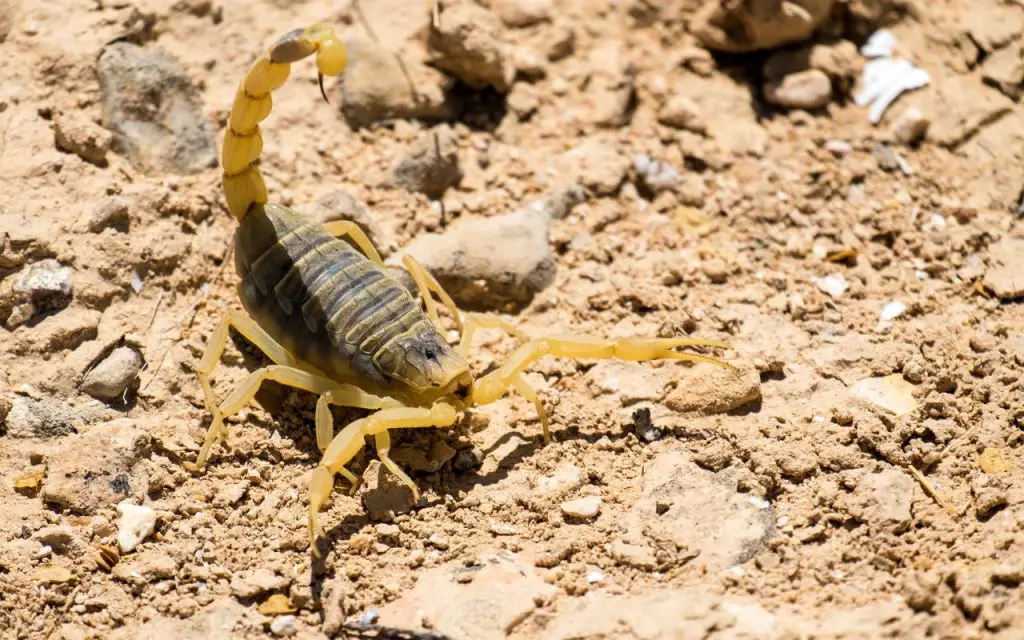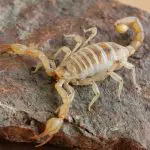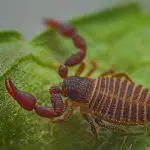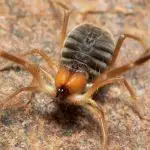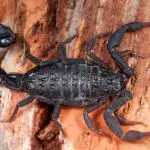Last updated on June 30th, 2023 at 01:04 pm
Where does the Deathstalker Scorpion live? This infamous scorpion is incredibly successful, having a huge distribution accross the Middle East and North Africa…
The Middle East and Northern Africa are home to the deathstalker scorpions. Starting from Algeria in the west to Kazakhstan and western India, they cover a vast area in the Sahara, Arabian Desert, Thar Desert, and Central Asia.
Its range spans via Egypt, Ethiopia, Asia Minor, and the Arabian Peninsula.
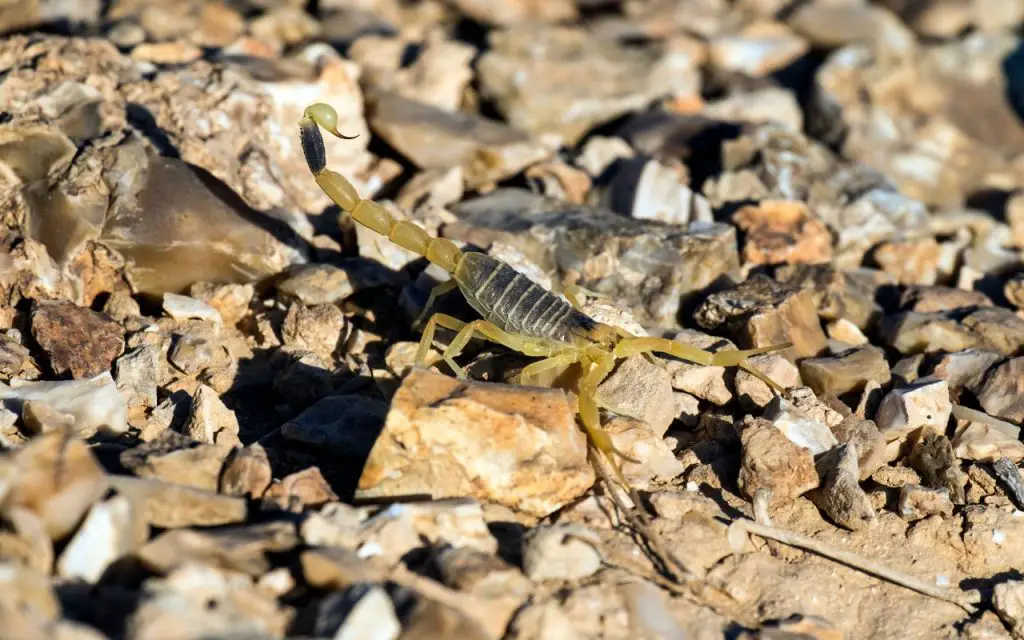
What do deathstalker scorpions eat?
Deathstalker scorpions mainly eat insects, including crickets, beetles, termites, flies, spiders, earthworms, centipedes, and even other scorpions of the same species. Due to their nocturnal nature, they hunt at night.
Their success is a result of their capacity to sense vibrations using sensory hairs that remain dispersed throughout the whole surface of their legs. This scorpion species ambush the victim by hiding beneath rocks, trees, or other objects while waiting.
Once they catch the prey, the scorpions assault it with their stinger if it tries to escape by using their powerful pincers to crush, weaken, and subdue the victim. They then take it to their mouth with the help of their pincers and consume it.
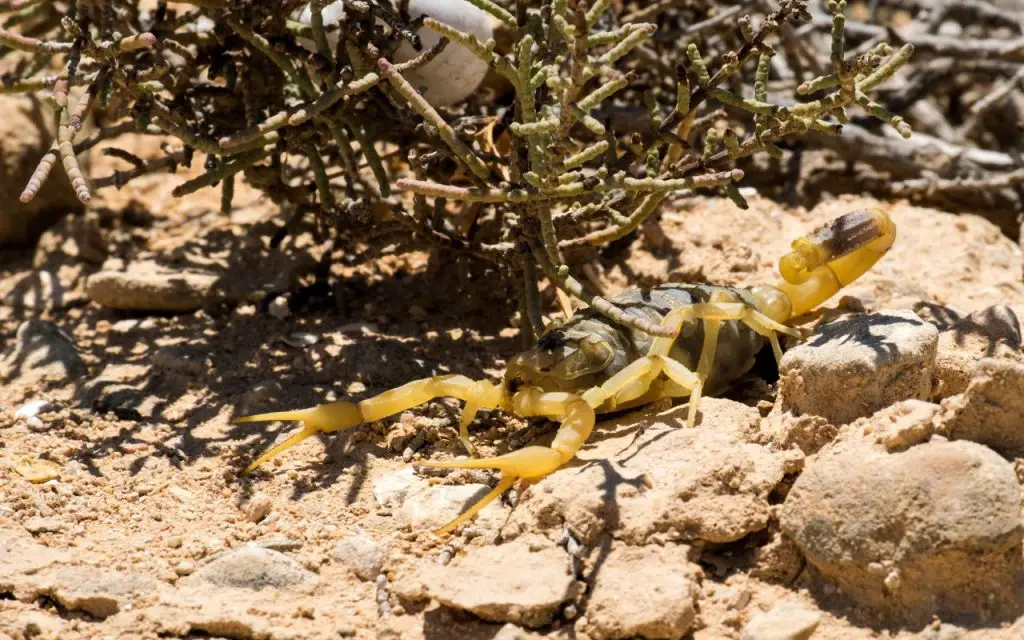
What helps the deathstalker scorpion survive?
Being nocturnal is crucial for deathstalkers, since they thrive in extremely dry environment. Being nocturnal helps them control temperature and water balance, which is essential for their existence.
Due to their flat bodies, these scorpions may readily hide in crevices, behind rocks and bark, and in microscopic gaps. These scorpions are burrowing species that occasionally enter openings left by other animals.
Due to the little annual precipitation received by this species of scorpion that lives in these dry and semi-arid areas, water conservation is crucial. They are capable of evaporating water In their lungs.
The fact that they have a strong barrier to gas exchange allows them to avoid this evaporation. Their fluid, which mimics blood in human bodies, is called hemolymph.
These scorpions need to have a high partial pressure for CO2 in their hemolymph to have such a high resistance to gas exchange. Their pH level drops or becomes quite acidic due to the high partial pressure of CO2.
The scorpions are able to thrive in these areas due to a number of variables, including their ability to adapt to a range of environmental changes. The deathstalker scorpion requires food in addition to maintaining water conservation to survive.
The prey that most scorpions consume will vary on what is present in each individual environment. Mostly, they eat small insects, such as termites, flies, beetles, and sometimes other scorpions or spiders.
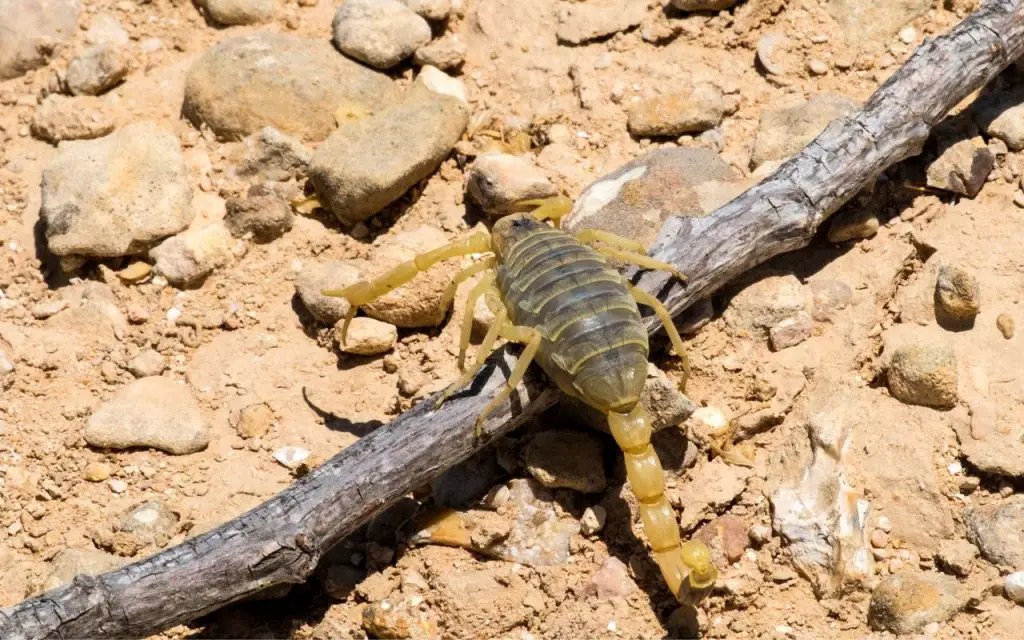
How long do deathstalker scorpions live?
Death stalker scorpions has a wide range of life expectancy, from four to 25 years on average. They do have a high mortality rate, though.
Do deathstalker scorpions live in groups?
In most cases, the adult deathstalker scorpion lives alone. They are reputed to never venture beyond of their home range, though.
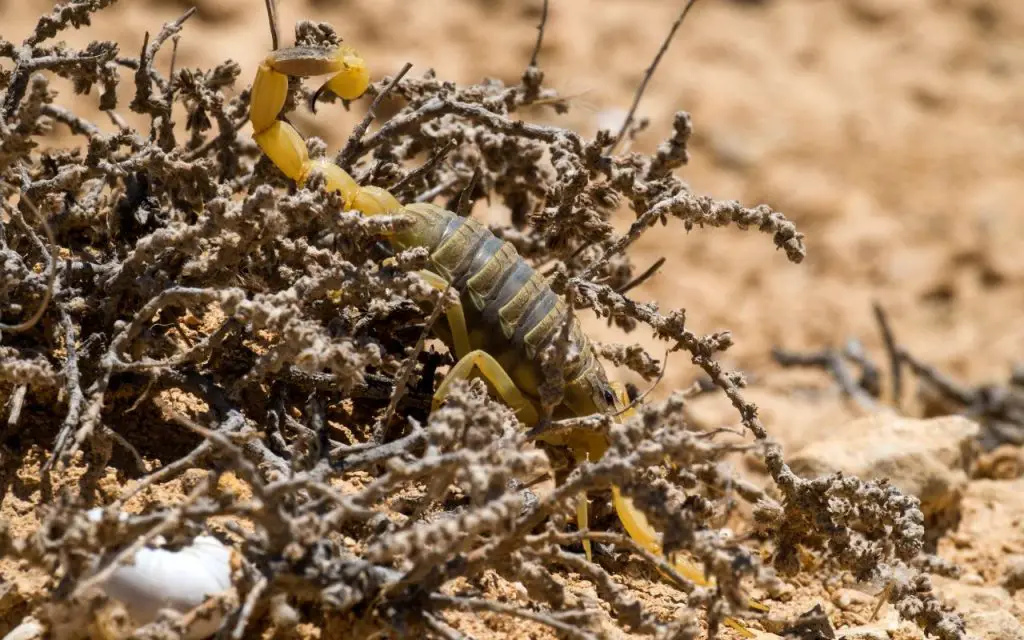
Behavior
Deathstalker scorpion’s scientific name is Leiurus quinquestriatus. This nocturnal species finds shade from the sun during the day behind rocks or in burrows. They are also the most dangerous scorpions in the world.
The length of the deathstalker scorpion can range from 1 to 4 inches (2.5 to 10 cm), although it typically measures slightly under 2.5 inches. As a result of their functions in reproduction, females are bigger than men.
Their hues range from light yellow to deep yellow and green. They have cephalothorax and abdomen with horizontal gray stripes that are strewn with others.
The vision of deathstalker scorpions is awful. They use their sense of touch for navigational and hunting functions.
The pectines are something else that scorpions have in addition to their other senses. A sensory organ called the pectines is located midventrally in the appendage.
These pectines point deathstalkers in the direction of food and potential partners. Under the legs of deathstalker scorpions is a little slit.
This makes it easier for them to detect ground vibrations, which helps them determine how far and in which direction a predator is. The slits also assist them in detecting the presence of a partner, which helps these scorpions act more effectively.
The courting and sperm transmission procedure for scorpions is often rather complex, and the deathstalker is no exception. Both sexes engage in a courting ritual in which they grab one other’s pedipalps and engage in a dance that lasts for several minutes.
The male then projects a spermatophore onto an appropriate surface. Spermatophore is a protein capsule that contains sperm cells, transported during mating.
The male guides the female into a position where the female may receive the male’s sperm because her vaginal hole is above the spermatophore. Both scorpions part ways when the courtship and sperm transfer are over.
Scorpions are viviparous, which means the young grow inside mother’s body before being born rather than emerging from eggs. The female deathstalker scorpions give birth to between 35 and 87 scorpionlings following a gestation period of 122 to 277 days.
Young scorpions clamber onto the mother’s back as soon as they are born and remain there for a few weeks. This benefits them by providing their mother’s protection, and it could also enable them to control moisture in their dry, hot, desert environment.
Newborn scorpions are quite big babies, and like most scorpion species, they go through several molts before becoming adults. Young scorpions resemble adult scorpions in size.
Is the deathstalker scorpion endangered?
Deathstalkers are not exceptionally endangered in comparison to other species. They gladly live in aquariums and eat crickets since they are simple to care and reproduce in captivity.
What eats deathstalker scorpions?
Owls, bats, other scorpions, and centipedes can eat deathstalker scorpions. Their poison seems to be resistant to bats.
Deathstalker scorpion for sale
More often sellers are taking deathstalker scorpions from their natural habitat and sell them to people who keep the scorpions as exotic pets. This is highly dangerous and even illegal in some countries as the deathstalker scorpion is aggressive.
For those who still desire to possess an Israeli desert scorpion, should study everything they need to know about the deathstalker scorpion and be completely aware of the health dangers associated. A captivity environment should imitate the wild as much as possible through temperatures, food availability, and habitat.
Deathstalker scorpion’s venom is one of the most expensive liquids available in the earth, costing $39 million per gallon. Deathstalker’s sting is 100 times more painful than a bee’s, endangering milkers.
Additionally, it requires several $2.6 million sessions to obtain a gallon since, at most, you can get only two micrograms of this powerful venom from a single specimen. The motivation comes from the fact that scorpion venom may treat multiple sclerosis, rheumatoid arthritis, and inflammatory bowel illness.
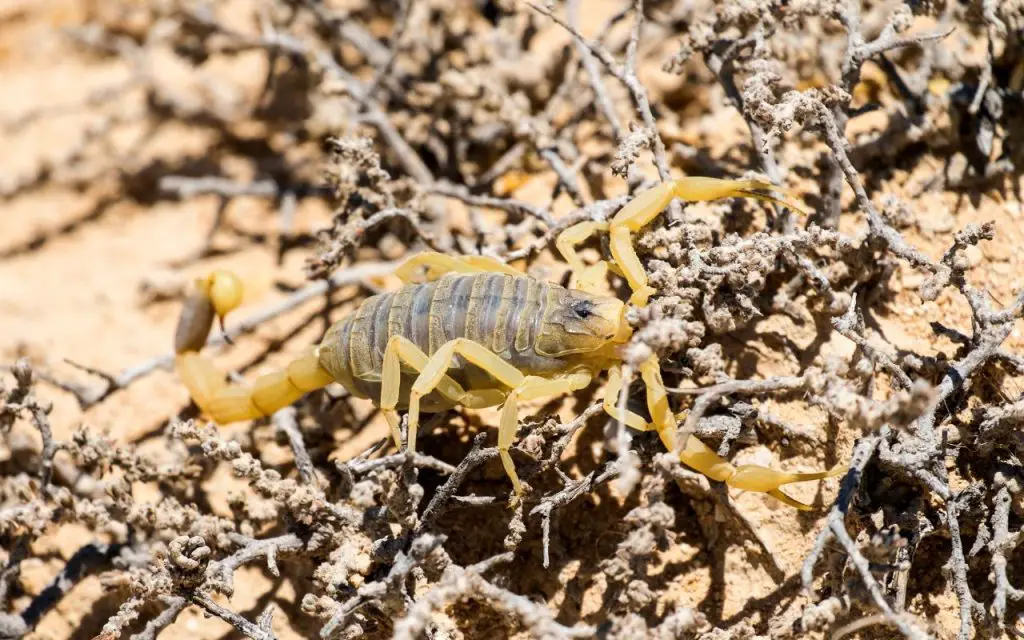
FAQ relating to where the deathstalker scorpion lives
Here are some frequently asked questions relating to where deathstalker lives:
Are deathstalker scorpions in the US?
While deathstalker scorpions, rock scorpion, emperor scorpion, or black scorpion are nearly unheard of in the United States, they are swiftly becoming a favorite pet for the exotic animal collector. Instead of deathstalkers, you’ll find Arizona bark scorpion in North America, especially in Arizona.
Giant forest scorpions are also unavailable in America. It is the largest scorpion in the world.
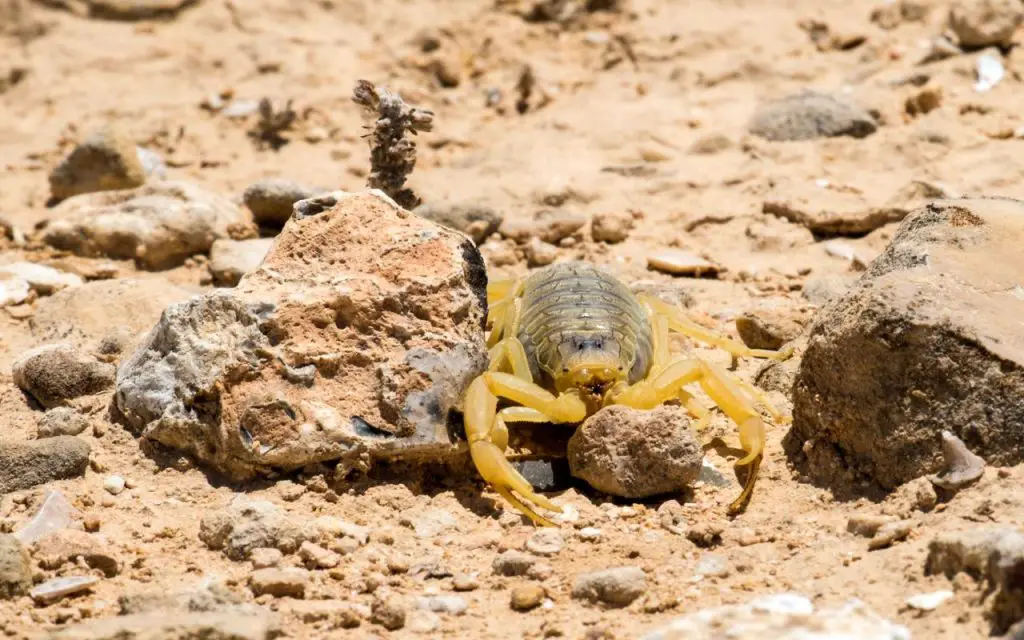
What do deathstalker scorpions live in?
Deathstalker scorpions live in hyper-arid and desert areas. They may be found in Africa in nations like Niger, Algeria, Somalia, Sudan, and those that lie between these directional divisions of the continent.
They may also come from other Middle Eastern nations, including the United Arab Emirates, Saudi Arabia, Oman, Iran, Yemen, and Turkey, etc. Omdurman scorpion and Naqab desert scorpion are other names of deathstalkers because they live in North Africa and the Middle East.
The Sahara Desert is another area where the deathstalker scorpion may frequently be seen. South Africa is home for Parabuthus transvaalicus, known as the giant deathstalker.
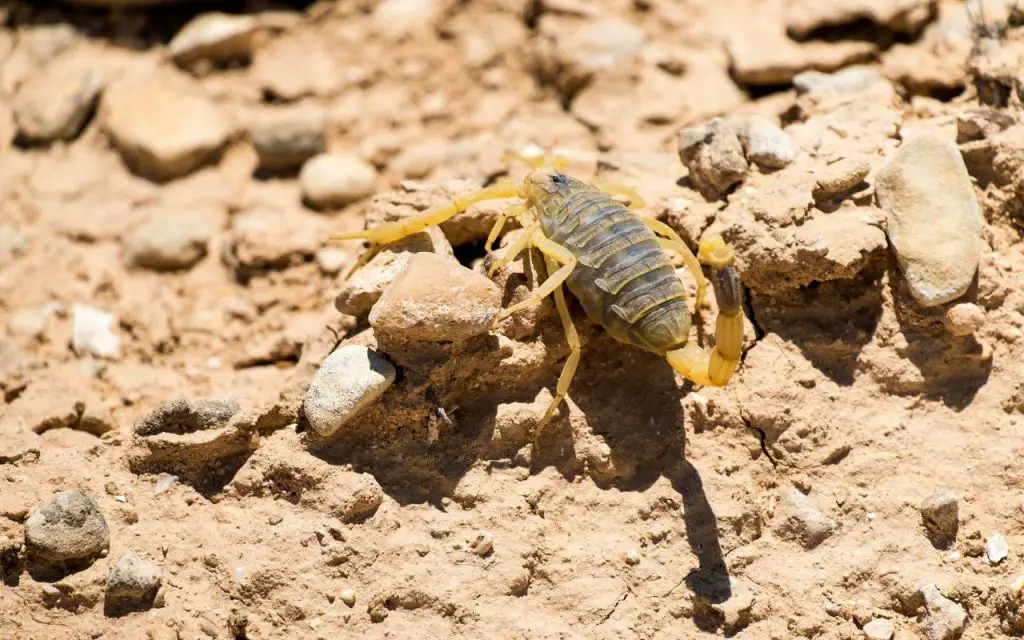
What is the deadliest scorpion on earth?
The deadliest scorpion in the world, according to legend, is the Indian red scorpion. This small yet most dangerous scorpion has a powerful bite. In US, the bark scorpions have venom potent enough to cause serious symptoms.
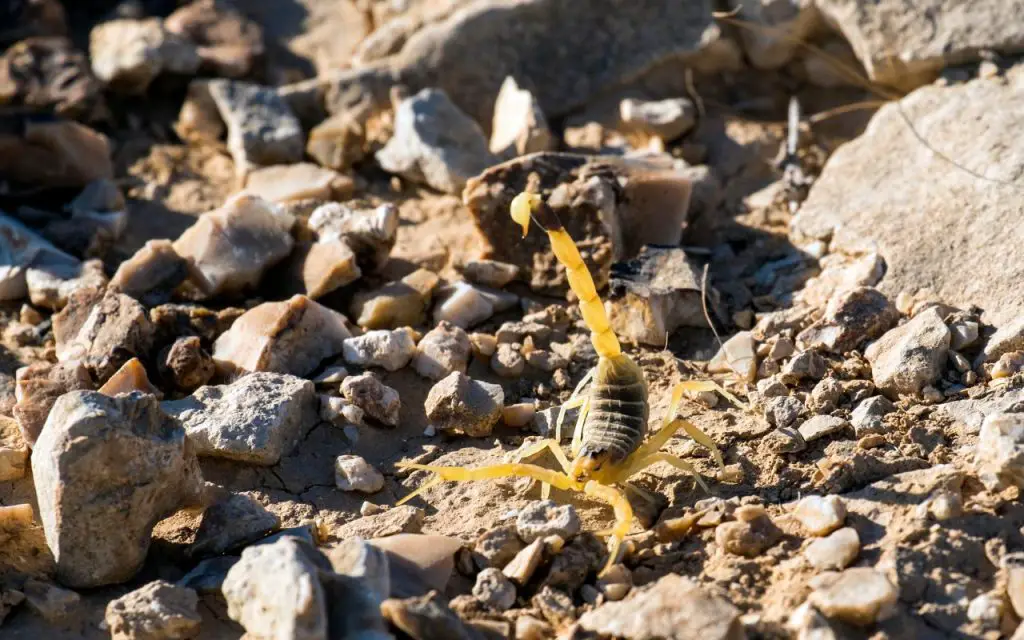
What happens if you get stung by a deathstalker?
When a deathstalker scorpion stings, its venom penetrates human skin and cause severe pain, noticeable allergic reactions at the sting site, paralysis, nausea, vomiting, headaches, diarrhea, and stomach cramps to healthy adults.
Convulsions and pulmonary edema in the lungs can also happen to individuals who are more susceptible, like young children and the elderly.
Death for these people may occur as a result of heart problems and respiratory failure. The most venomous scorpion sting causes to emit four major toxins in its victims:
- Scyllatoxin: It takes its name from the sea monster Scylla from Greek mythology. Scyllatoxin blocks small-conductance potassium ion triggered by calcium ion.
- Chlorotoxin: A 36-amino acid peptide called chlorotoxin blocks the modest conductance present in chloride channels. It is the focus of research for treating malignancies, especially those of the brain.
- Charybdotoxin: The neurotoxin charybdotoxin inhibits calcium-activated potassium channels and can cause excessive neuronal excitability. The death stalker’s sting contains a neurotoxic made up of 37 amino acids.
- Agitoxins: There are three different forms of agitoxins in the venom, and they all include potent 38 amino acid compounds.
A deathstalker’s poison causes serious health problems. In such situation, make a medical emergency call for immediate help.

